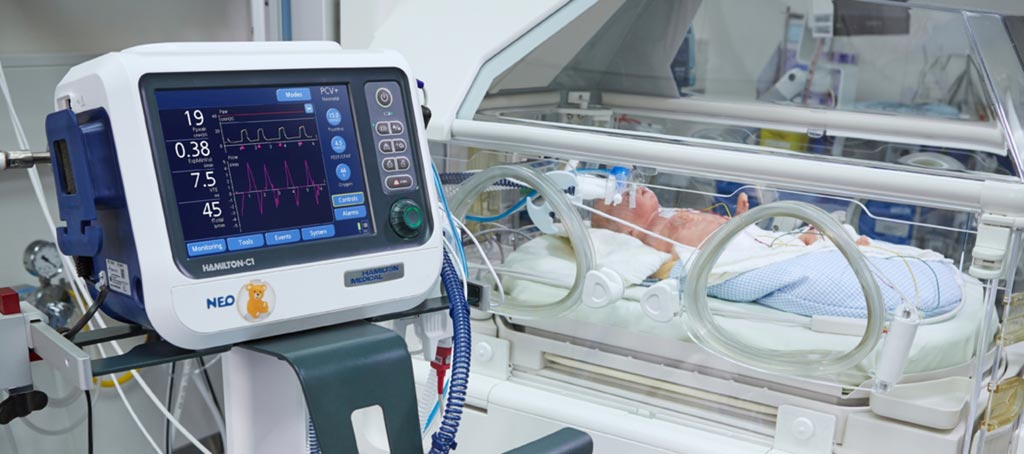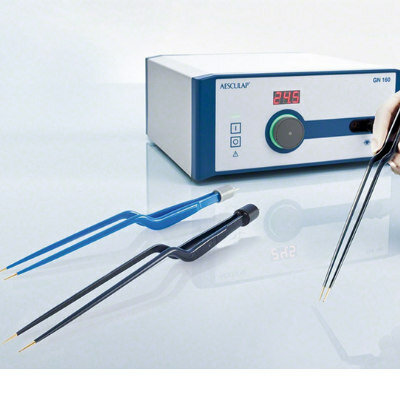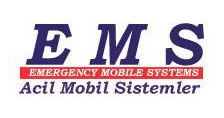Global Neonatal Ventilator Market to Surpass USD 466 Million by 2025
|
By HospiMedica International staff writers Posted on 19 Mar 2019 |

Image: Preterm births with respiratory disorders and mortality rates are driving the demand for various neonatal ventilators worldwide (Photo courtesy of Hamilton Medical).
The global neonatal ventilator market is expected to surpass USD 466.1 million by 2025 as rising incidences of preterm births with respiratory disorders and mortality rates will drive the demand for various neonatal ventilators worldwide.
The market growth is being further aided by technological advancements in the design and function of ventilators driving their increased adoption, especially in the developed regions, and rising birth rates. However, inadequate infrastructure needed to support advanced ventilators in the developing and under-developed regions, and high prices of ventilators are likely to hamper their adoption in several economies across the globe.
These are the latest findings of Global Market Insights (Selbyville, DE, USA), a global market research and consulting service provider.
On the basis of product, the non-invasive ventilation segment was valued at around USD 93.5 million in 2018 and will continue to grow over the coming 5-7 years due to the steadily increasing acceptance of non-invasive systems. However, invasive systems will continue to be mainstream interface in several regions across the world. Efforts by manufacturers and government institutions to reduce the prices of non-invasive ventilators are likely to fuel the segment’s growth. The need to use a non-invasive interface for treating preterm birth neonates will have a significantly positive impact on the growth of the non-invasive ventilation segment.
Based on mobility, the intensive care ventilators segment is estimated to grow at a robust CAGR of 6.9% during the forecast period, as an increase in the number of critically ill infants will drive the demand for ventilators in neonatal care units. Based on technology, the high frequency ventilators segment was valued at around USD 87.9 million in 2018, due to their advantages such as higher levels of PEEP with conventional ventilation, smaller tidal volumes and fully coordinated volume-targeted conventional mechanical ventilatory modes.
On the basis of mode, the volume mode ventilation segment was valued at USD 59.3 million in 2018, as their ease of use and efficiency continues to boost the demand and adoption rate of neonatal ventilators. Based on end-use, the clinics segment was valued at USD 79.7 million in 2018 and is expected to continue growing during the forecast period, driven by the growing popularity of clinics in the developed regions, increase in the number of clinics and rapid adoption of advanced airway interfaces.
Geographically, the US neonatal ventilator market is the largest in the world and is estimated to grow at a CAGR of 5.9% during the forecast period. The US, a pioneer and early adopter of various airway interface devices, will continue to dominate the global neonatal ventilator market during the forecast period. India’s improving healthcare infrastructure, expanding and developing hospital sector, growing number of births, and increasing adoption of new devices to address the appalling conditions of neonates suffering from respiratory problems are expected to drive the country’s neonatal ventilators market during the forecast period.
Related Links:
Global Market Insights
The market growth is being further aided by technological advancements in the design and function of ventilators driving their increased adoption, especially in the developed regions, and rising birth rates. However, inadequate infrastructure needed to support advanced ventilators in the developing and under-developed regions, and high prices of ventilators are likely to hamper their adoption in several economies across the globe.
These are the latest findings of Global Market Insights (Selbyville, DE, USA), a global market research and consulting service provider.
On the basis of product, the non-invasive ventilation segment was valued at around USD 93.5 million in 2018 and will continue to grow over the coming 5-7 years due to the steadily increasing acceptance of non-invasive systems. However, invasive systems will continue to be mainstream interface in several regions across the world. Efforts by manufacturers and government institutions to reduce the prices of non-invasive ventilators are likely to fuel the segment’s growth. The need to use a non-invasive interface for treating preterm birth neonates will have a significantly positive impact on the growth of the non-invasive ventilation segment.
Based on mobility, the intensive care ventilators segment is estimated to grow at a robust CAGR of 6.9% during the forecast period, as an increase in the number of critically ill infants will drive the demand for ventilators in neonatal care units. Based on technology, the high frequency ventilators segment was valued at around USD 87.9 million in 2018, due to their advantages such as higher levels of PEEP with conventional ventilation, smaller tidal volumes and fully coordinated volume-targeted conventional mechanical ventilatory modes.
On the basis of mode, the volume mode ventilation segment was valued at USD 59.3 million in 2018, as their ease of use and efficiency continues to boost the demand and adoption rate of neonatal ventilators. Based on end-use, the clinics segment was valued at USD 79.7 million in 2018 and is expected to continue growing during the forecast period, driven by the growing popularity of clinics in the developed regions, increase in the number of clinics and rapid adoption of advanced airway interfaces.
Geographically, the US neonatal ventilator market is the largest in the world and is estimated to grow at a CAGR of 5.9% during the forecast period. The US, a pioneer and early adopter of various airway interface devices, will continue to dominate the global neonatal ventilator market during the forecast period. India’s improving healthcare infrastructure, expanding and developing hospital sector, growing number of births, and increasing adoption of new devices to address the appalling conditions of neonates suffering from respiratory problems are expected to drive the country’s neonatal ventilators market during the forecast period.
Related Links:
Global Market Insights
Latest Business News
- Philips and Masimo Partner to Advance Patient Monitoring Measurement Technologies
- B. Braun Acquires Digital Microsurgery Company True Digital Surgery
- CMEF 2025 to Promote Holistic and High-Quality Development of Medical and Health Industry
- Bayer and Broad Institute Extend Research Collaboration to Develop New Cardiovascular Therapies
- Medtronic Partners with Corsano to Expand Acute Care & Monitoring Portfolio in Europe
- Expanded Collaboration to Transform OR Technology Through AI and Automation
- Becton Dickinson to Spin Out Biosciences and Diagnostic Solutions Business
- Boston Scientific Acquires Medical Device Company SoniVie
- 2026 World Hospital Congress to be Held in Seoul
- Teleflex to Acquire BIOTRONIK’s Vascular Intervention Business
- Philips and Mass General Brigham Collaborate on Improving Patient Care with Live AI-Powered Insights
- Arab Health 2025 Celebrates Landmark 50th Edition
- Boston Scientific Acquires Medical Device Company Intera Oncology
- MEDICA 2024 to Highlight Hot Topics of MedTech Industry
- Start-Ups To Once Again Play Starring Role at MEDICA 2024
- Boston Scientific to Acquire AFib Ablation Company Cortex
Channels
Critical Care
view channel
CPR Guidelines Updated for Pediatric and Neonatal Emergency Care and Resuscitation
Cardiac arrest in infants and children remains a leading cause of pediatric emergencies, with more than 7,000 out-of-hospital and 20,000 in-hospital cardiac arrests occurring annually in the United States.... Read more
Ingestible Capsule Monitors Intestinal Inflammation
Acute mesenteric ischemia—a life-threatening condition caused by blocked blood flow to the intestines—remains difficult to diagnose early because its symptoms often mimic common digestive problems.... Read more
Wireless Implantable Sensor Enables Continuous Endoleak Monitoring
Endovascular aneurysm repair (EVAR) is a life-saving, minimally invasive treatment for abdominal aortic aneurysms—balloon-like bulges in the aorta that can rupture with fatal consequences.... Read more
Wearable Patch for Early Skin Cancer Detection to Reduce Unnecessary Biopsies
Skin cancer remains one of the most dangerous and common cancers worldwide, with early detection crucial for improving survival rates. Traditional diagnostic methods—visual inspections, imaging, and biopsies—can... Read moreSurgical Techniques
view channel
Robotic Assistant Delivers Ultra-Precision Injections with Rapid Setup Times
Age-related macular degeneration (AMD) is a leading cause of blindness worldwide, affecting nearly 200 million people, a figure expected to rise to 280 million by 2040. Current treatment involves doctors... Read more
Minimally Invasive Endoscopic Surgery Improves Severe Stroke Outcomes
Intracerebral hemorrhage, a type of stroke caused by bleeding deep within the brain, remains one of the most challenging neurological emergencies to treat. Accounting for about 15% of all strokes, it carries... Read morePatient Care
view channel
Revolutionary Automatic IV-Line Flushing Device to Enhance Infusion Care
More than 80% of in-hospital patients receive intravenous (IV) therapy. Every dose of IV medicine delivered in a small volume (<250 mL) infusion bag should be followed by subsequent flushing to ensure... Read more
VR Training Tool Combats Contamination of Portable Medical Equipment
Healthcare-associated infections (HAIs) impact one in every 31 patients, cause nearly 100,000 deaths each year, and cost USD 28.4 billion in direct medical expenses. Notably, up to 75% of these infections... Read more
Portable Biosensor Platform to Reduce Hospital-Acquired Infections
Approximately 4 million patients in the European Union acquire healthcare-associated infections (HAIs) or nosocomial infections each year, with around 37,000 deaths directly resulting from these infections,... Read moreFirst-Of-Its-Kind Portable Germicidal Light Technology Disinfects High-Touch Clinical Surfaces in Seconds
Reducing healthcare-acquired infections (HAIs) remains a pressing issue within global healthcare systems. In the United States alone, 1.7 million patients contract HAIs annually, leading to approximately... Read moreHealth IT
view channel









.jpg)




